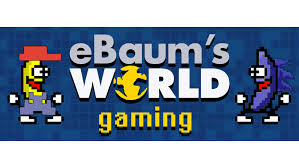For decades, the New York Times Crossword puzzle has captivated and challenged minds across the globe. What started as a simple pastime has evolved into a cultural phenomenon, shaping leisure time, stimulating intellects, and fostering a community of devoted solvers. Let’s delve into why these puzzles hold such a unique and enduring appeal.
A Legacy of Craftsmanship and Tradition
The NYT Crossword puzzle is more than just a game; it’s a testament to craftsmanship and tradition. Each grid is meticulously constructed by skilled crossword constructors who carefully balance creativity with the rules of crossword construction. The puzzle’s editor, often a revered figure like Will Shortz, meticulously curates clues and ensures that each puzzle meets the high standards expected by NYT solvers.
Accessibility and Challenge Hand in Hand
One of the puzzle’s greatest strengths is its ability to cater to solvers of all skill levels. Beginners can start with the easier puzzles earlier in the week, gradually building confidence and skill before tackling the more challenging grids later on. This progressive difficulty ensures that there’s always a puzzle suitable for every solver, from novices to seasoned experts.
Community and Camaraderie
Beyond the puzzles themselves, the NYT Crossword puzzle has cultivated a vibrant community of enthusiasts. Online forums buzz with discussions about the day’s puzzle, where solvers dissect clues, share solving strategies, and celebrate breakthroughs. This sense of camaraderie extends beyond the virtual world, with crossword clubs and meetups bringing solvers together in person to celebrate their shared passion.
Mental Fitness and Cognitive Benefits
Engaging with crossword puzzles isn’t just a leisure activity; it’s also a workout for the brain. Studies have shown that solving puzzles can help improve cognitive abilities such as memory, reasoning, and problem-solving skills. The mental gymnastics required to decipher clues and fill in grids provide a stimulating challenge that keeps minds sharp and agile.
Evolution in the Digital Age
While crossword puzzles have a rich history rooted in print media, they have adapted remarkably well to the digital age. The NYT Crossword app and website have made puzzles accessible anytime, anywhere, on various devices. This accessibility has introduced a new generation of solvers to the joys of crossword puzzles, ensuring that the tradition continues to thrive in a rapidly changing world.
Crossword as Cultural Barometer
Beyond its recreational value, the NYT Crossword often reflects and responds to current events and cultural trends. Constructors and editors incorporate contemporary references, pop culture nods, and timely themes into puzzles, making each grid a snapshot of the zeitgeist. This ability to evolve with the times ensures that the crossword remains relevant and engaging for solvers of all generations.
The Thrill of the Solve
At its core, the allure of the NYT Crossword lies in the thrill of the solve. That moment when a challenging clue finally clicks, or when the last square is filled in, brings a rush of satisfaction and accomplishment. It’s a testament to perseverance, patience, and the joy of cracking a puzzle designed to tease and tantalize.
Educational Value and Lifelong Learning
For many, solving the NYT Crossword is not just a hobby but a form of ongoing education. The puzzles introduce solvers to new vocabulary, historical tidbits, and obscure facts, expanding knowledge in an engaging and interactive way. This continuous learning process fosters a curiosity about the world and encourages lifelong intellectual growth.
Future Prospects and Innovations
Looking ahead, the future of the NYT Crossword puzzle seems bright. Advances in technology may further enhance the solving experience, offering new ways to interact with puzzles while preserving the essence of what makes them so beloved. As long as there are curious minds eager for mental challenges, the NYT Crossword puzzle will continue to thrive, captivating solvers and enriching lives one clue at a time.
In conclusion, the NYT Crossword puzzle isn’t just a game; it’s a cultural institution that has woven itself into the fabric of leisure time, intellectual pursuit, and community engagement. With its blend of tradition, accessibility, and mental stimulation, it continues to inspire and unite solvers around the world, ensuring its place as a timeless icon of puzzling excellence.



